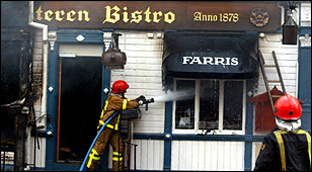If you've not had the pleasure of sampling authentic Dutch bread, let me tell you that you are in for an experience you didn't see coming.
If you're a conservative/romantic when it comes to bread, you probably slice your bread with a knife. This means that a) it's hard enough to be sliced and b) it's a loaf, not pre-sliced. Well, if you come to Holland, both of those terribly reasonable assumptions are unapologetically cast aside.
When you buy bread here, it's a soft sponge. And it's pre-sliced. In fact, natives are so terrified of bread that isn't sliced that if you actually find it in the supermarket, a rarity in itself, it has a big label saying not sliced. :scared: Yeah, take your chances, buddy.
This presents a real practical problem, because the bread gets deformed before you get home. If you apply the classic 7-loaves-to-a-plastic-bag formula, you'll notice that you can fit many more loaves into a bag, just like you can fill a bucket with untold amounts of cotton. But the result is that the bread doesn't restore its original form, as a sponge would. It's permanently deformed. So now instead of putting bread at the bottom, you have to handle it like the most fragile piece of fruit, silk gloves treatment.
But that's not all. The bread here just isn't very good. Although there is plenty of choice, it's a choice of mediocre products. Sure enough, they may appear to have all kinds of different flavors, and different grains, and embellished packaging, but when you actually try it, you often realize that the most fancy looking products have an aftertaste you can't stand. They also smell funny. On the whole, the bread gives the impression of being manufactured, rather than baked.
Predictably, it's not just the bread. A rich culture for bread products tends to show in all kinds of pastry. One that Holland apparently doesn't have. And the pastry here is truly bad. There really isn't anything you would buy to say serve to guests, or for a snack. For instance, you'll find croissants, but they're far from the real thing.
In Poland the bread is certainly a lot more authentic, although it isn't that great. But not this mushy spongy stuff. Meanwhile, the pastry is very good, there's lots of choice and tradition.
In Norway the bread culture is very high, and just about any bread you can find is better than anything you'll find around here. The pastry side of things is less prosperous, there are a few trademark traditional products, but not too many of them. Then there's a tradition of imported products like Wiener-rolls, which is a cornerstone in Norwegian pastry. Not native perhaps, but embraced as one's own.

 May 20th, 2007
May 20th, 2007





